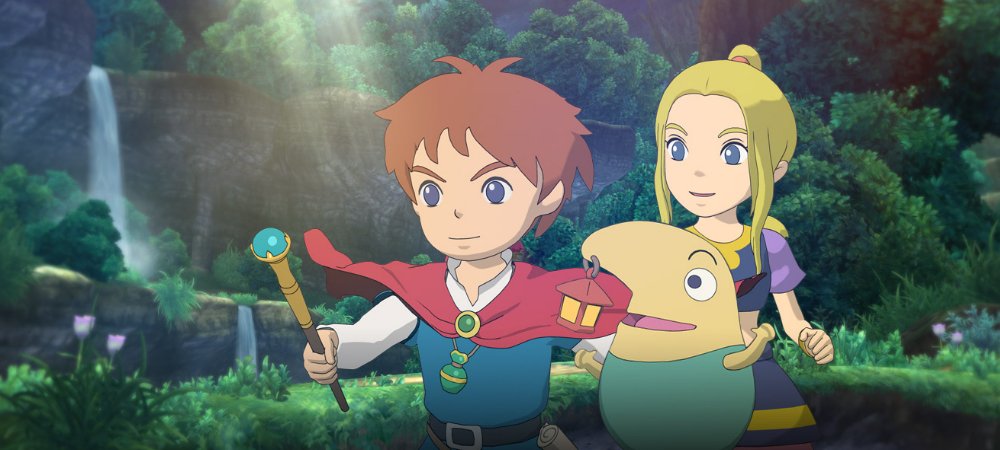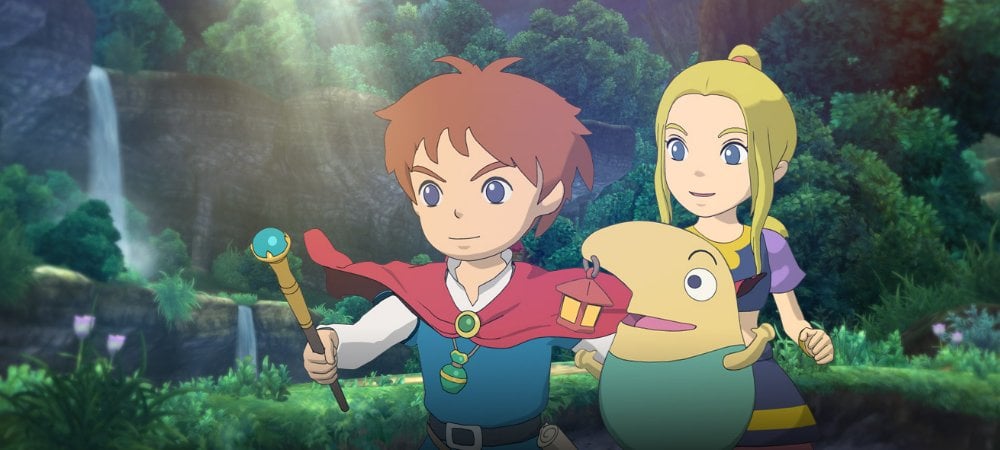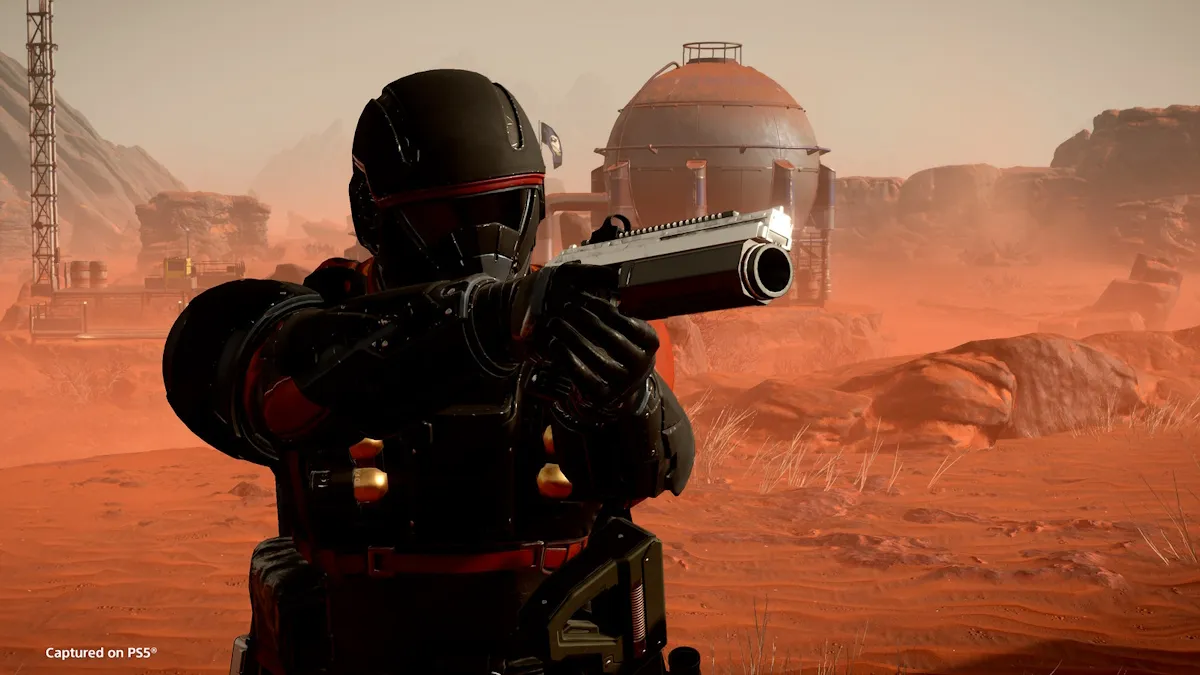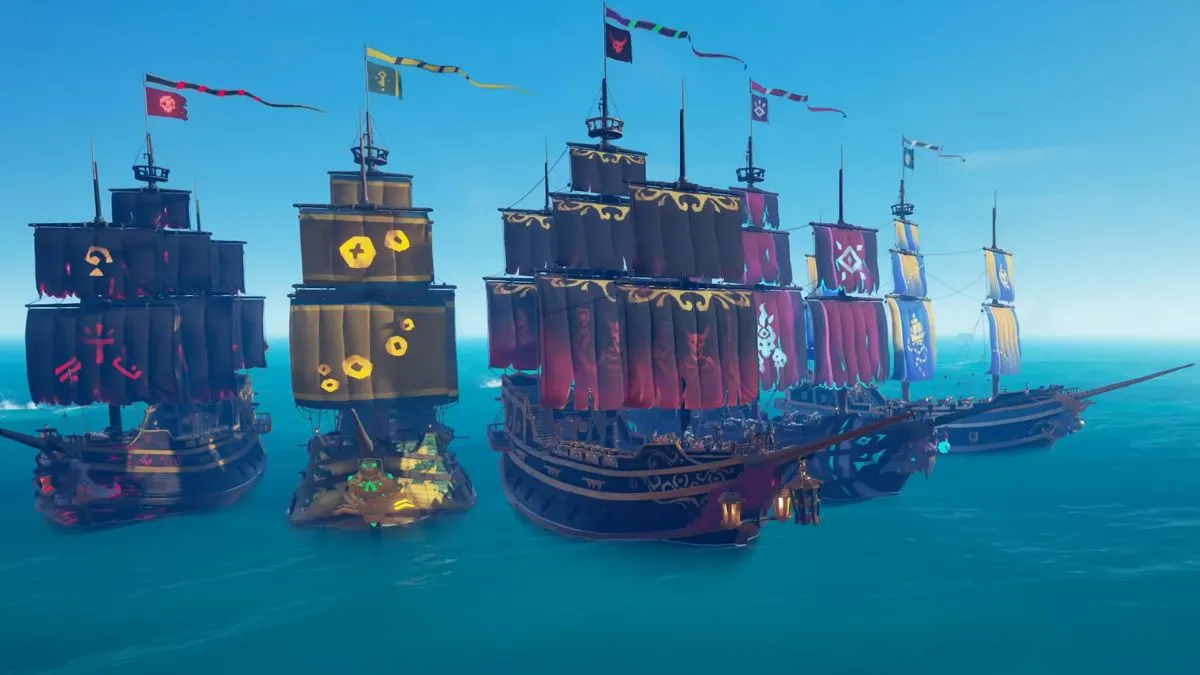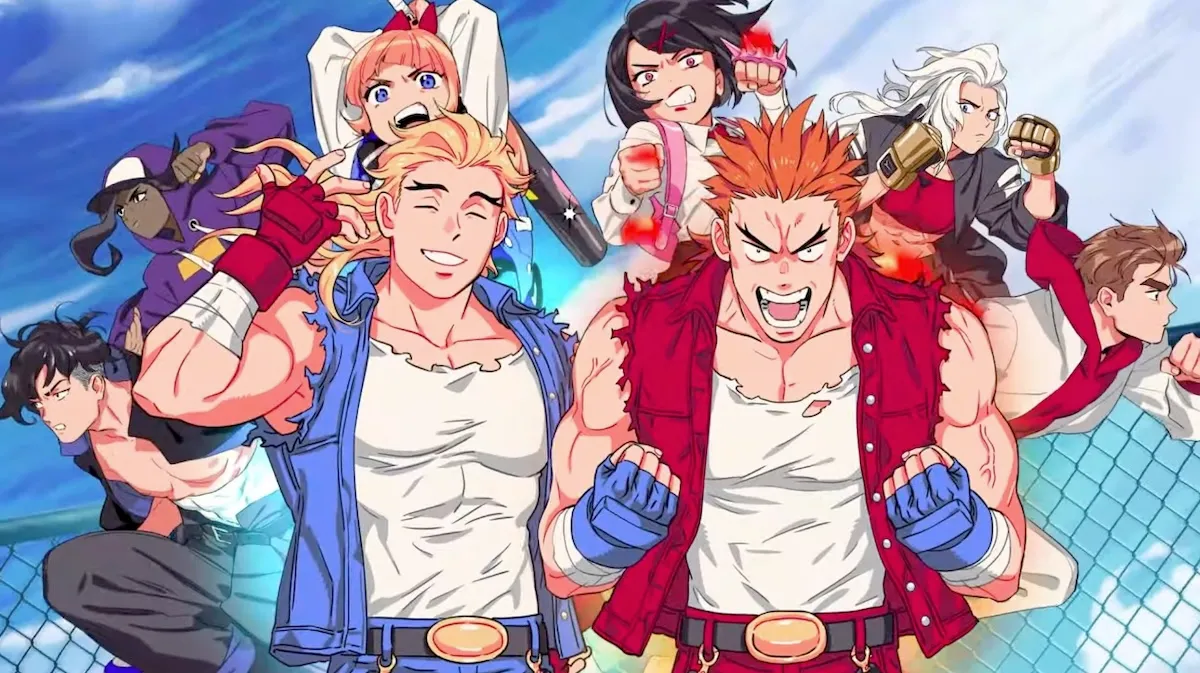Put your Ni Nos to the grindstone
Ni no Kuni: Wrath of the White Witch could have easily been called Japanese Role-Playing Games: The Official Videogame, for it plays out like an overview of the entire genre as much as it does a game in its own right.
It has leveling. It has equipment. It has battles every few seconds. It has an overworld. It has a desert. It has towns. It has an arena. It has a casino. It has summon magic. It has an airship. It has side quests. It has bounty hunting. It has Pokémon. It has famous Japanese artists on the team. It has alchemy. If you can think of a common JRPG staple, there’s a more than reasonable chance of Ni no Kuni boasting it in spades.
If you’re a fan of classic, time-consuming, grinding role-playing experiences, and you’re not excited right now, you need to work on that. Ni no Kuni does more than ape the classics of the genre — it works its ass off to be just as good.

Ni no Kuni: Wrath of the White Witch (PlayStation 3)
Developer: Level-5
Publisher: Namco Bandai
Released: January 22, 2013
MSRP: $59.99
Wrath of the White Witch tells the tale of Oliver, a boy from Motor City who, through a tragic family event, finds himself alone and grieving. His misery, however, has the fortunate side effect of lifting the curse on a fairy from another world, the rambunctious Mr. Drippy, who convinces him to become a wizard in an alternative mirror universe where all the important people coincidentally share souls with everybody Oliver knows in his small city block. As is often the way!
The story, afflicted though it is with plot holes, a little creep of a protagonist who says “Jeepers” and “Neato” without a trace of irony, and some of the most passive-aggressive villains in videogame history, is actually quite good. It suffers from a slow start, but once it gets going, the supporting cast and charming world of Ni no Kuni make suffering through Oliver’s simpering (and inexplicable American accent in a world of British ones) worth it. Mr. Drippy, while constantly running the risk of being irritating, is actually quite affable, helped in no small part by the relative rarity of hearing a Welshman in a videogame, while the plot twists toward the end are smartly executed, even if they’re made a bit obvious before the grand unveiling.
As a wizard, Oliver naturally has access to a whole range of spells, for use both within battle and without. The most useful non-combat spells come in the form of the “Take Heart” and “Give Heart” skills, which Oliver employs to undo the work of the villainous Dark Djinn Shadar. Various characters around the world are missing pieces of their heart, lacking qualities such as courage, enthusiasm, and ambition. Fortunately, other inhabitants of the world have an abundance of such qualities, so Oliver must grab a piece of their excess heart and give it to Shadar’s victims. While there are many important “Brokenhearted” characters, many incidental NPCs also require help, and visiting towns to collect emotions can become a huge game in its own right. Not the most exciting game, maybe, but helping out the Brokenhearted can be rewarded with merit stamps, which one can trade for a number of helpful passive abilities.
Other spells grant players the power to build bridges, open locks, light dark tunnels, and even float. Some of them don’t have much practical use at all, while others have specific uses that you may not even discover while playing the first time. Oliver’s magical wizard book, accessible in the main menu, contains details on all these spells, as well as summaries of equipment, lore, monsters, and even a heaping of fairy tales if you ever get too bored. The amount of effort poured into realizing the world of Ni no Kuni is extraordinary, and it’s a good thing too, because Ni no Kuni‘s is a very nice world to be in.

Of course, getting into battles is the main draw of Ni no Kuni, and fans of grinding, leveling, and hectic combat will be served more than their fair share of pleasure. Combat is reminiscent of the Tales series of games, with real-time movement of the battle arena and skills that cool down after use. During the game’s plodding opening hours, this system at first looks rather brainless, but eventually opens up to become astonishingly tactical, with the player eventually learning how to command the party, initiate synchronized blocks in time to weather powerful boss attacks, and — of course — make good use of familiars.
While Oliver and his eventual party of allies all boast a range of combat skills, one quickly finds they’re not quite strong enough to handle the creatures of the world. However, they possess the ability to capture and train the very monsters they’re fighting as friendly familiars, with up to three creatures per party member used in battle. These familiars can be swapped in and out at will, and each one has its own strengths, weaknesses, and attacks. With three party members boasting three familiars each, one can have a party of twelve in any given fight, though familiars all share the same health meter as their master. Utilizing the right familiars, swapping them out before they get too tired, and keeping everybody healthy is no small task, and the battles are paced quickly enough to where the combat can feel like total chaos. However, it’s a carefully controlled chaos, and a player with a clear mind will be able to swap between allies, switch out familiars, and know when to use the human characters’ abilities at just the right time. Once you realize that it’s a game about using everything you have, rather than trying to rely on one tactic and one familiar, you start to truly appreciate the depth on display.

Each human hero and familiar is leveled up independently, gaining stat boosts and new skills as they rack up experience points. Once familiars reach certain levels, they can be “metamorphosed” into new and powerful forms, though they will lose all their experience and begin anew at level one. So it is that Ni no Kuni becomes a game all about leveling. You level up your familiar to get it to the point where it has to start again from scratch, then level it up some more so it can start from scratch again. Every familiar has three forms (the final form being one of two unique variants selected by the player), and if you aim to have a strong party, ready to face the sudden difficulty jumps presented by boss encounters, you better be prepared to grind like a workhorse.
While not quite as ludicrously involved as games like Disgaea, it’s fair to say that Ni no Kuni is certainly on the high end of the time demanding ratio. You’ll be needing to maintain a party of twelve fighters, and most players will be swapping familiars out of the stable as they discover new and better ones, so the game is a constant struggle to keep fighting fit. Familiars gain experience whether they’re in battle or not, so they can be taken into a fight against tough monsters to jump a few levels, but even so, this is a game about constant training, and no small amount of patience. Each boss assumes you’ve spent an hour or so building up your skills specifically for that one fight, and wastes no time in demolishing you if you’ve not done so. For some, this is going to be a real chore, but for others, I dare say I’ve just described Heaven.
I’m somewhere in the middle. I can appreciate a good grindfest, but I find Ni no Kuni sometimes takes it to extremes. This is already a long game, and when every new area of the map requires a few hours of training to survive, progression slows to a crawl and threatens to become an excruciating bore. It’s a good job the world is so adorable, the monsters original and amusing, and the actual payoff for the hard work feeling like a true reward. Not to mention, there’s plenty of additional content to break up the monotony and keep one invested.

Still, this is a game that thrashes and bites when you try to hug it, fighting your love every step of the way. Just saving up enough gold to have an acceptable level of revival items and equipment is a grind in and of itself. You don’t unlock the power to fast travel until twenty hours in, and it takes even longer than that to get the dragon and fly across the map. Wrath of the White Witch‘s grind-heavy structure can feel imbalanced and overzealous, its demands on the player’s time occasional disrespectful. At times, I got so sick of the game, and of hearing Oliver screaming “Neato,” that I was furiously criticizing the protagonist’s gormless face. Such is the maddening nature of Ni no Kuni — compelling its victims to hurl insults at a digital thirteen-year-old.
Fight it does, but loving I remain. It’s one of those games you always start playing enthusiastically, and leave feeling broken and drained. You’ll be cursing, you’ll be tired, but even though you shut down the game in a bedraggled, dejected state, it’ll only take a few minutes before you realize how much of a blast you were actually having, and after a break from the slog, you’ll be chomping at the bit for more. Never has a game made me so tired and so excited at the same time. It is a strange, perverse ambivalence, to say the least.

While sharing many similarities with the likes of Tales, Pokémon, and Persona, White Witch reminds me most evocatively of Dragon Quest VIII: Journey of the Cursed King, a comparison I mean as one of the highest possible compliments. From its gorgeous cel-shading, involved alchemy system, delightfully awful love of puns (“Your Meowjesty!”), and time-sink capabilities, playing Ni no Kuni regularly feels like one of my favorite JRPGs has come back from the dead. Of course, it’s hardly surprising when you know Level-5 worked on both games, but seeing so much of DQ VIII living on through this title is something very special indeed.
The aforementioned cel-shading alone is enough to draw accolades, and any review not dedicating at least a paragraph to its beauty would be performing a disservice. Featuring artwork from the beloved Studio Ghibli, Ni no Kuni is an absolute treasure for the eyes, with fluid animations, amazing creature designs, and some of the most gorgeous, colorful environments you could hope to see in a game. While many games have been praised for looking like an actual cartoon, few titles can hope to come as close as this. It really does feel like you’re wandering around in a living, breathing cartoon, and even thirty hours into the adventure, I was still having my breath taken away by its visual splendor.
This is to say nothing of the music, brought to us by Joe Hisaishi and the Tokyo Philharmonic. Packed with memorable tunes (the world map theme is stuck in my head as I type this) and elegant arrangements, there is a reason why expectant fans have been talking up the soundtrack in the weeks leading to launch. As with so much of the game, its orchestral qualities and sense of fun really put me in mind of Dragon Quest VIII, and that will never be a bad thing.

Wrath of the White Witch is a love letter to the classic Japanese role-playing game. It draws its elements from the best and the brightest of the genre, mimicking everything from Pokémon to Grandia with a knowing wink and no small amount of affection. It takes all these inspirations and blends them in a way entirely unique to itself, giving fans of traditional RPGs — a rarity in the modern world — something they’ve been starved of for a very long time.
It has its problems, of course. The abrupt difficulty spikes can feel like an ambush, and the amount of time it absorbs borders on the imposing. Yet, as annoying as it can be, it can never be said that Ni no Kuni is badly put together. It’s as structurally sound as a game can get, something made all the more impressive by how messy and sloppy the combat looks before you start to realize quite how clever it actually is. And even those negatives can be intense positives to the right person in the right mood.

If you’re a lover of games that require you to put in before you get out, and you recall the glory days of the Eastern RPG, where experience points were the lifeblood and the grind was king, you have literally no decent excuse for not finding a way to play Ni no Kuni: Wrath of the White Witch. A classic of the modern age, built entirely from classics of the past, it’s advised you get comfortable, cancel all your plans, and prepare to enjoy a game that will dominate your life for the next few months.
